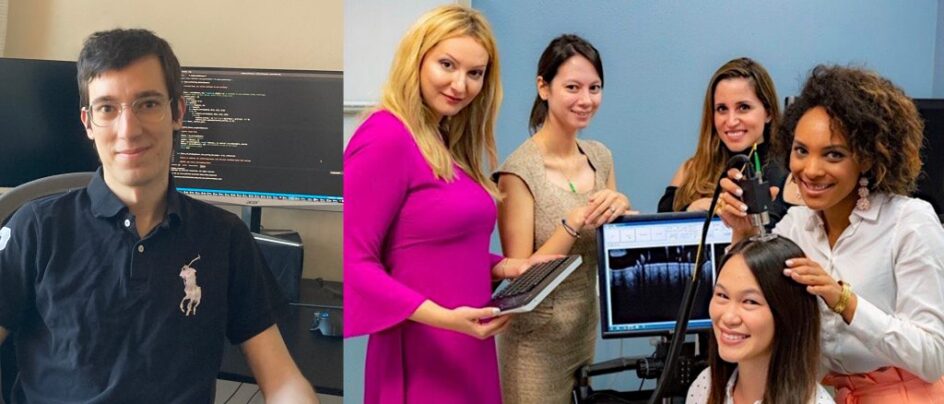Computer Science Researchers Contribute to ‘Editor’s Choice’ Paper on Deep Learning and Hair Loss
Two computer science researchers from the Donald Bren School of Information and Computer Sciences (ICS) are co-authors of a paper selected as the Editor’s Choice for the October issue of the Lasers in Surgery and Medicine journal. Computer science Ph.D. student Gregor Urban and his adviser, Distinguished Professor Pierre Baldi, are part of the multidisciplinary team behind “Combining Deep Learning with Optical Coherence Tomography Imaging to Determine Scalp Hair and Follicle Counts.” Urban and Baldi worked with dermatology physicians Natasha Mesinkovska and Chloe Ekelem, and with undergraduate students Ella Csuka and Kiana Hashemi, medical student Nate Feil, and M.D. resident Franchesca Choi.
“The success of this project is predicated on having a diverse, interdisciplinary team,” says Baldi. The project focused on the widespread issue of hair loss. “Scientific assessment of the efficacy of any treatment requires being able to accurately count hair over a fixed area of the scalp,” says Baldi, explaining that he and Urban found a way to conduct the process using machine learning methods.

While current methods can be somewhat invasive, their approach offers a completely non-invasive method for evaluating the effectiveness of hair growth therapies. Using laser-based imaging — specifically, optical coherence tomography (OCT) — and automated deep learning, they can automatically and rapidly identify and count all hairs.
The team evaluated their proposed method on 70 different OCT scans and found that the automated deep learning system’s accuracy was similar to that of human evaluators but significantly faster. They argue that their approach is well positioned to become a standard for non-invasive evaluation of hair growth treatment progress in patients, saving significant amounts of time and effort compared to manual evaluation.
— Shani Murray